Cranial Nerves
1/75
There's no tags or description
Looks like no tags are added yet.
Name | Mastery | Learn | Test | Matching | Spaced |
|---|
No study sessions yet.
76 Terms
I Olfactory
II Optic
III Oculomotor
IV Trochlear
V Trigeminal
VI Abducens
VII Facial
VIII Vestibulocochlear
IX Glossopharyngeal
X Vagus
XI Accessory
XII Hypoglossal
list all cranial nerves in order
Olfactory and optic
list the sensory only nerves (no numbers needed)
Oculomotor, trochlear, abducens, Accessory, and Hypoglossal
list the motor only nerves
Trigeminal, Facial, Vestibulocohlear, Glossopharyngeal, and vagus
list the nerves that do both motor and sensory function
CN I Olfactory
Description of what nerve: Conducts olfactory sensations to brain
CN I Olfactory
What CN has the only type of nervous tissue to regenerate?
Receptors in olfactory mucosa of nasal cavity
Origin of the Olfactory nerve
bipolar
what type of neurons are the receptors for the olfactory nerve
anosmia
Damage to the olfactory nerve causes what condition
Vision
sensory function of CN II Optic
CN II Optic
this special sensory nerve of vision if an outgrowth of the brain; more appropriately called a brain tract
retina of the eye
origin of the optic nerve
anopsia
condition caused by damage to the optic nerve
anosmia
damage to the ethmoid bone may cause BLANK if it damages the nerve receptors
sphenoid
the optic nerve passes through which bone via the optic foramen
CN III Oculomotor
This nerve innervates the upper eyelid muscle and four of the six extrinsic eye muscles
supplies 4 extrinsic eye muscles to move eye and supplies levator palpebrae superioris muscle to elevate eyelid
somatic motor function of CN III Oculomotor
superior rectus, inferior rectus, medial rectus, and inferior oblique
name the 4 extrinsic eye muscles included in the somatic function of the CN III oculomotor
innervates sphincter pupillae muscle of iris to make pupil constrict. Contracts cilliary muscles to make lens of eye more spherical
Parasympathetic motor function of CN III Oculomotor
midbrain
origin of CN III oculomotor
ptosis, paralysis of most eye muscles, diplopia, focusing difficulty
conditions if CN III oculomotor is damaged
CN IV trochlear
this nerve innervates 1 extrinsic eye muscle that loops through a pulley shaped ligament
superior oblique
what is the 1 extrinsic eye muscle innervated by the trochlear nerve
inferiorly and laterally
what directions does the superior oblique move the eye
midbrain
origin of trochlear nerve
paralysis of superior oblique, diplopia
conditions possible if trochlear nerve is damaged
superior rectus
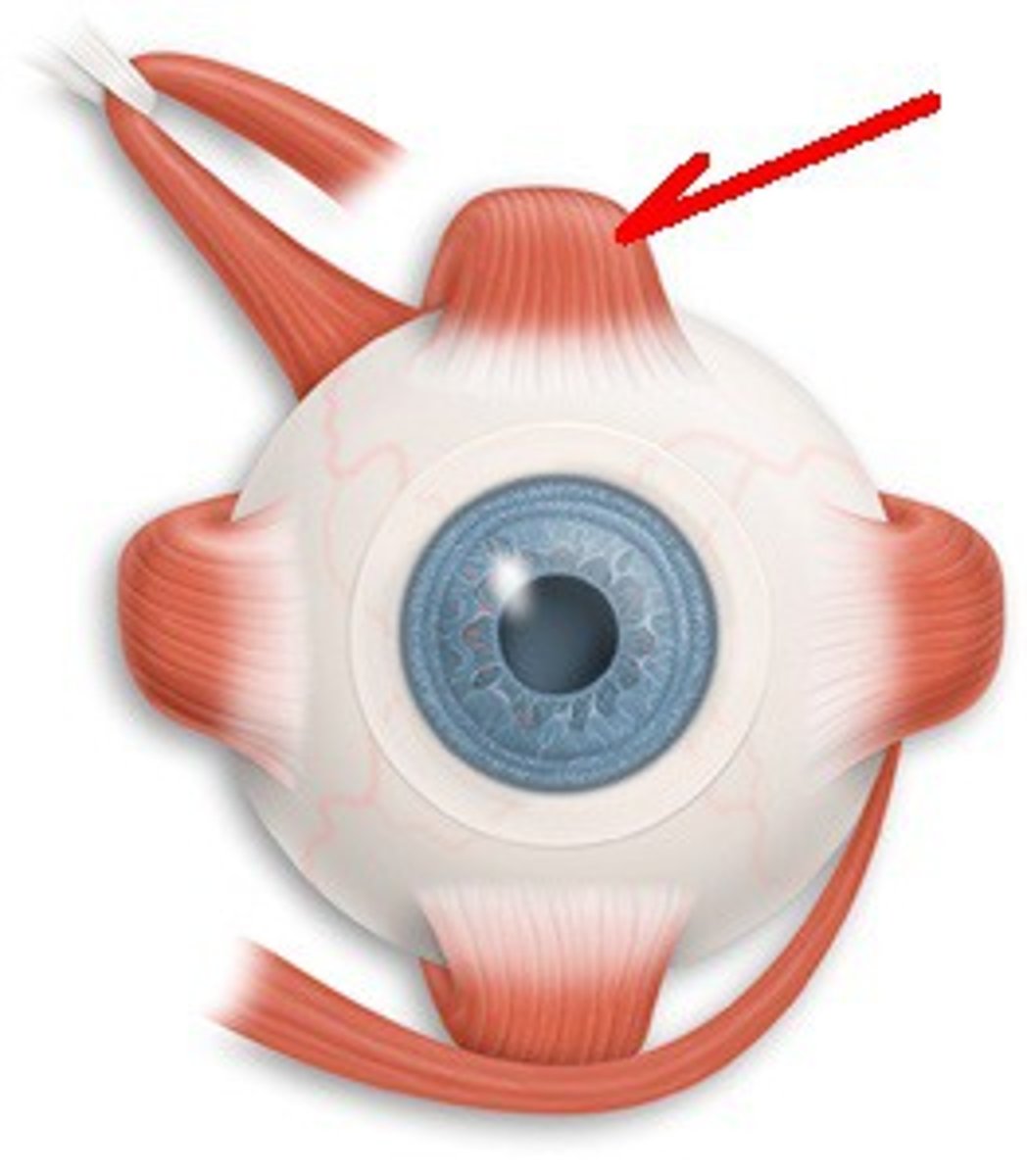
levator palpebrae superioris
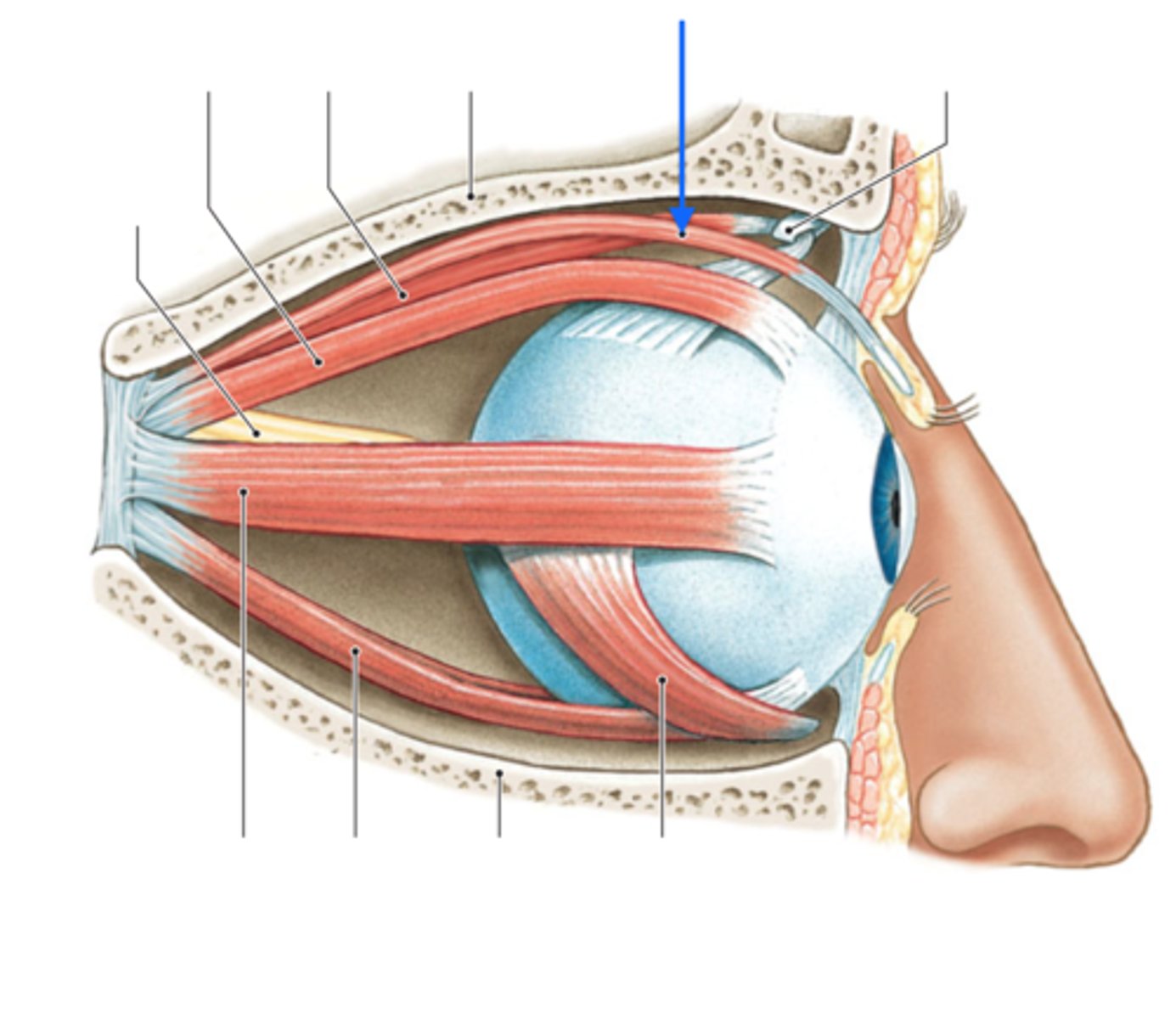
inferior rectus
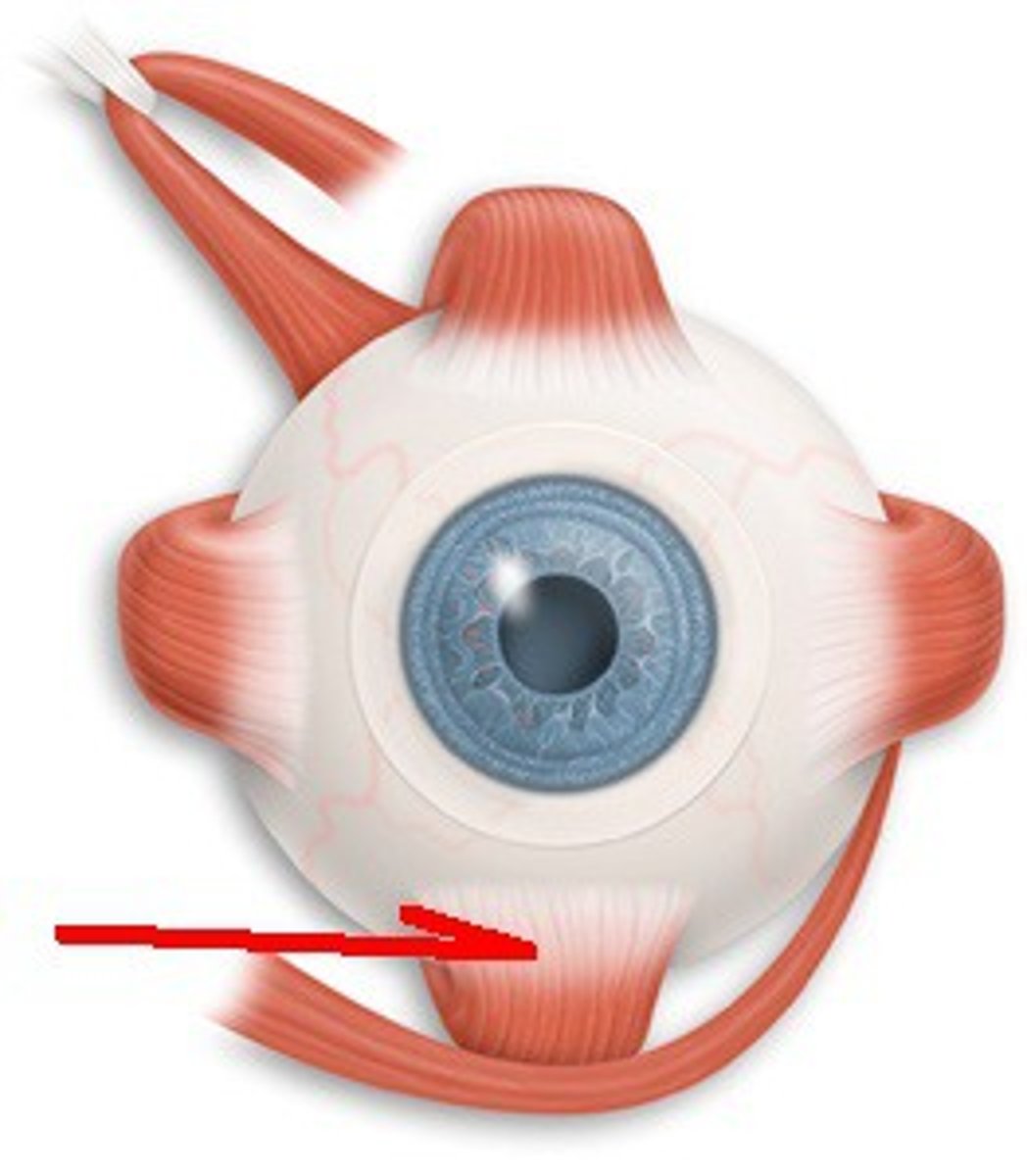
inferior oblique
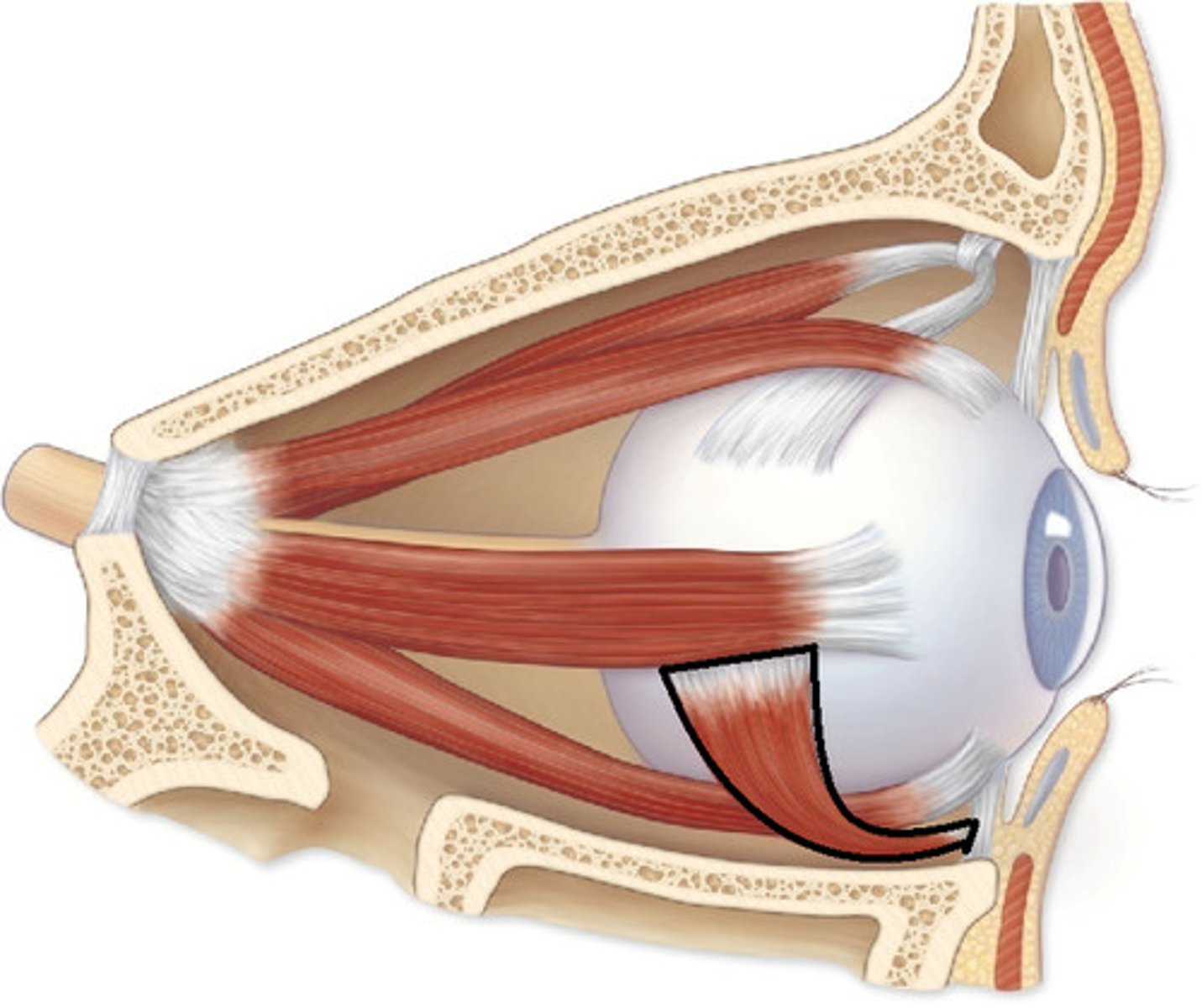
medial rectus

sphincter pupillae
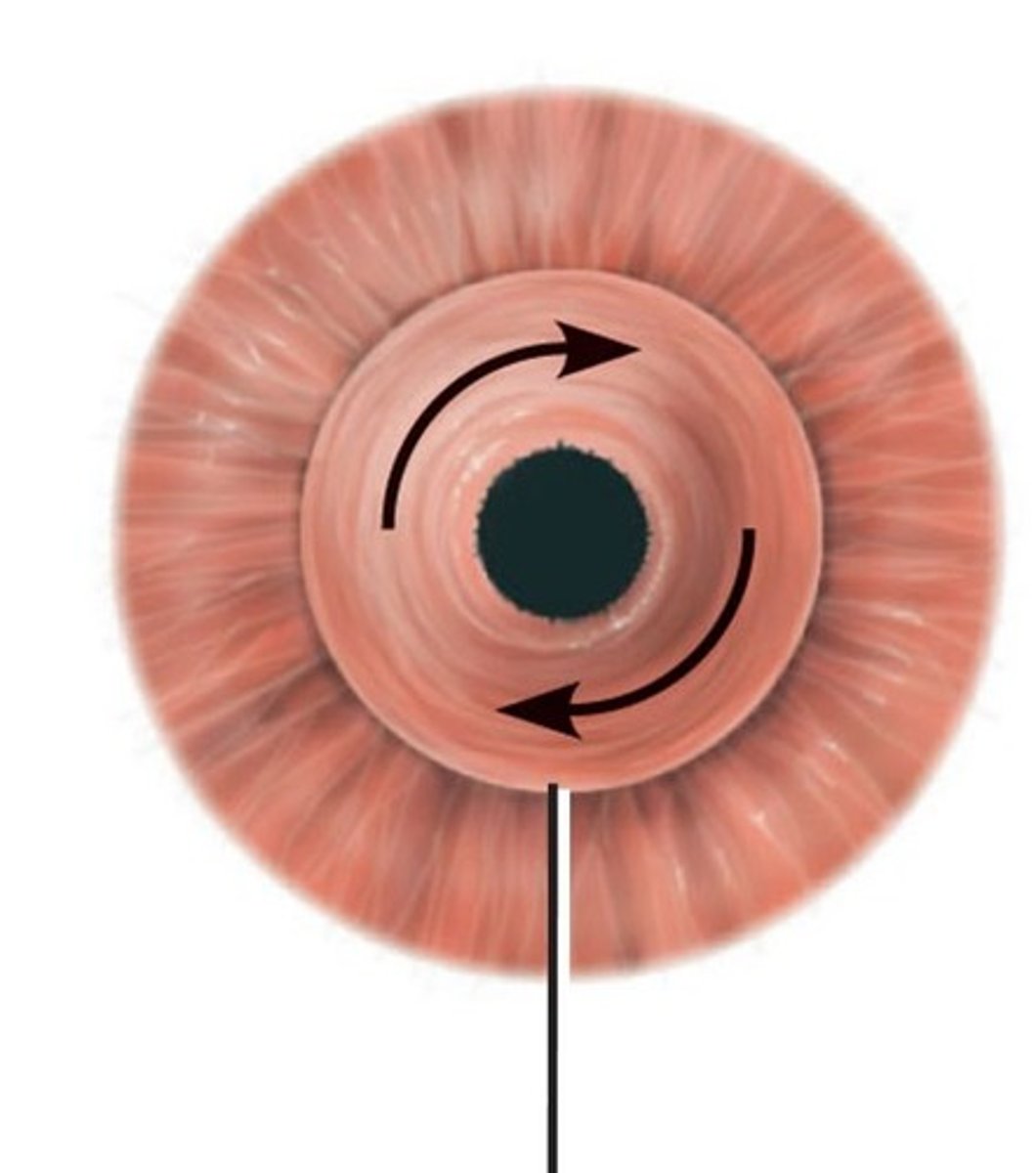
cilliary muscle
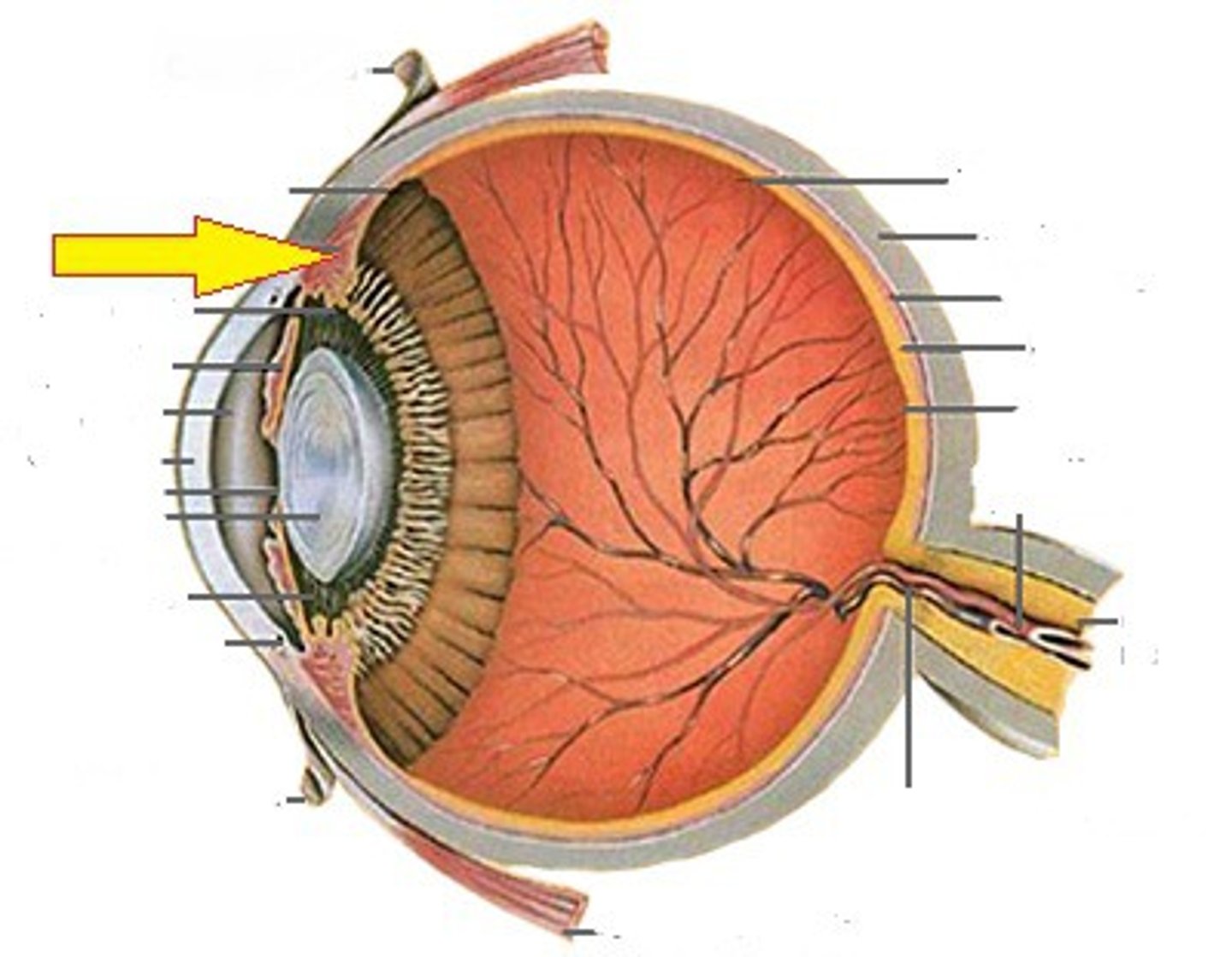
dilator pupillae
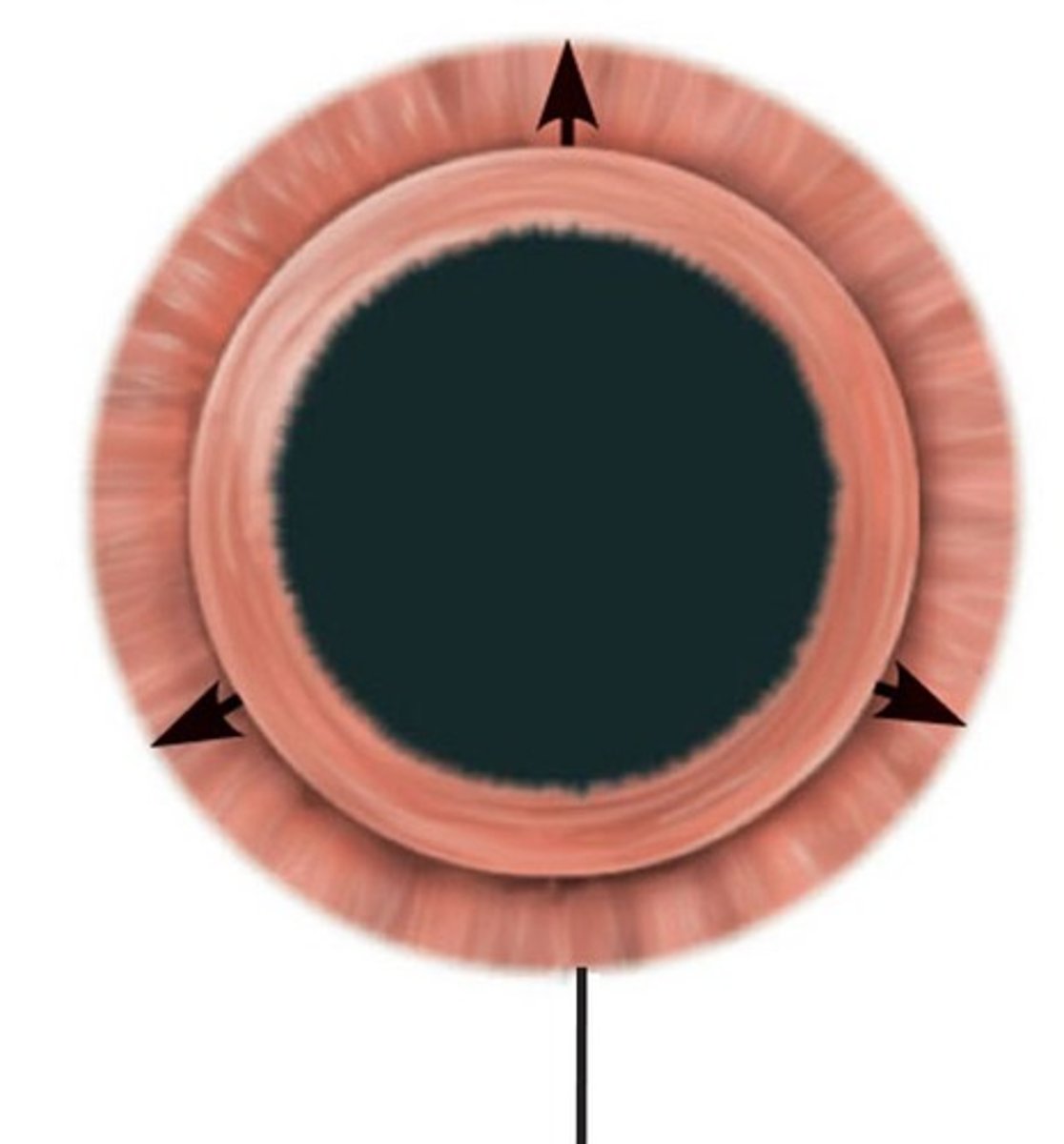
CN V Trigeminal
this nerve consists of 3 divisions: opthalmic (V1) Maxillary (V2), and Mandibular (V3); receives sensory from face, oral cavity, nasal cavity, meninges and anterior scalp. Innervates muscles of mastication
touch, temperature, and pain
sensory types of information for the trigeminal nerve are
Opthalmic (V1)
BLANK division of trigeminal nerve conducts sensory impulses from cornea, nose, forehead, ant. scalp, and meninges
Maxillary (V2)
BLANK division of trigeminal nerve conducts sensory impulses from nasal mucosa, palate, gums, cheek, and meninges
Mandibular (V3)
BLANK division of trigeminal nerve conducts sensory impulses from ant. 2/3 of tongue, meninges, skin of chin, lower jaw, lower teeth; 1/3 sensory axons of auricle of ear
innervates muscles of mastication, mylohyoid, ant. belly of digastic, tensor tympani and tensor veli palatini
somatic motor function of CN V trigeminal
temporalis, masseter, lateral and medial pterygoids
muscles of mastication innervated by CN V trigeminal include
pons
origin of CN V trigeminal
trigeminal neuralgia
conditions of nerve damage for CN V trigeminal
CN VI Abducens
innervates lateral rectus eye muscle, which abducts the eye
lateral rectus
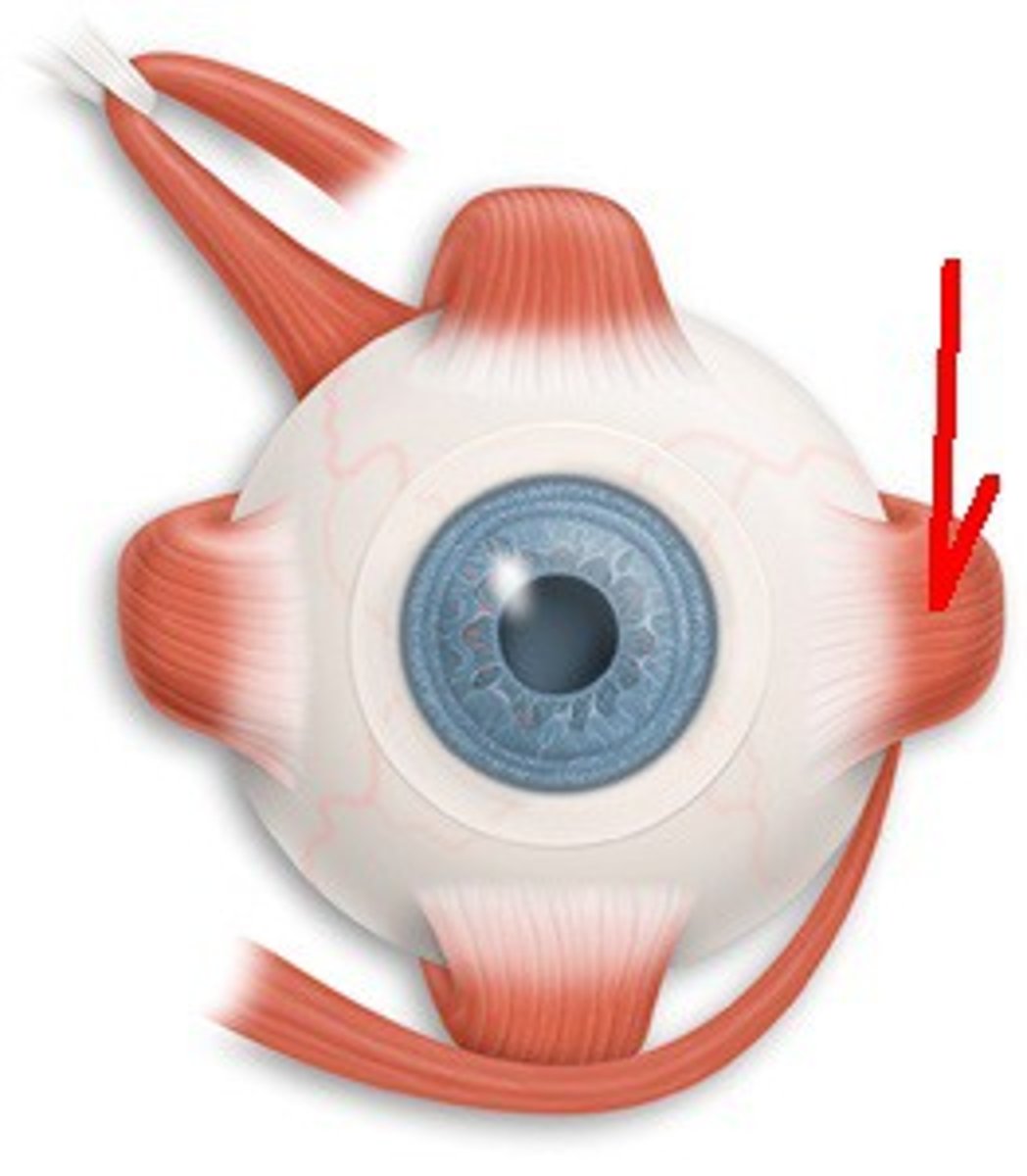
innervates lateral rectus for eye abduction
somatic motor function of CN VI abducens
pons
origin of CN VI abducens
CN VII Facial
Innervates muscles of facial expression; lacrimal gland, and most salvary glands; conducts taste sensations from ant. 2/3 of tongue
taste from ant. 2/3 of tongue
CN VII Facial sensory function
5 major motor branches innervate the muscles of facial expression, the posterior belly of the digastric muscle, and the stylohyoid and stapedius muscles
somatic motor function of CN VII Facial
temporal, zygomatic, buccal, mandibular, and cervical
name the 5 major branches of the facial nerve
increases secretions of lacrimal gland as well as submandibular and sublingual salivary glands
parasympathetic motor function of CN VII Facial
pons
origin of CN VII facial
dry eye, dry mouth, loss of taste sensation ant. 2/3 of tongue, and bell palsy
conditions of damaged facial nerve
carotid sinus
At the branching of internal and common carotid is the BLANK BLANK- a baroreceptor that provides barometric pressure info to help regulate bp
CN VIII Vestibulocochlear
conducts equillibrium and auditory sensations to brain
vestibular branch conducts impulses for equilibrium, cochlear branch conducts impulses for hearing
sensory function of CN VIII vestibulocochlear
hair cells in the vestibule of inner ear
origin of vestibular branch of CN VIII vestibulocochlear
cochlea of the inner ear
origin of cochlear branch of CN VIII vestibulocochlear
junction of pons and medulla oblongata
where does the vestibulocochlear nerve enter the brainstem
loss of balance, nausea, vomiting, and dizziness
conditions from damage to vestibular branch
loss of hearing
conditions from damage to cochlear branch
CN X Vagus
this nerve innervates structures in the head and neck and in the thoracic and abdominal cavities
Visceral sensory information from heart, lungs, and most abdominal organs. General sensory information from external acoustic meatus, eardrum, laryngopharynx and larynx
Sensory function of CN X Vagus Nerve
Innervates most pharynx muscles and all larynx muscles
Somatic motor function of CN X Vagus
Innervates smooth muscle of thoracic and most abdominal organs, cardiac muscle, and glands of heart, lungs, pharynx, larynx, trachea, and most abdominal organs
Parasympathetic motor function of CN X Vagus
motor nuclei in medulla oblongata
origin of CN X Vagus
CN XI Accessory
Innervates trapezius and sternocleidomastoid muscles
travels with CN XI Accessory to pharynx
somatic motor function of cranial root for CN XI Accessory
motor nuclei in spinal cord
somatic motor function of spinal root of CN XI Accessory
Medulla oblongata
origin of cranial root of CN XI Accessory
spinal cord
Origin of spinal root of CN XI Accessory
CN XII Hypoglossal
innervates intrinsic and extrinsic tongue muscles
Innervates intrinsic and extrinsic tongue muscles
Somatic motor function of CN XII hypoglossal
Hypoglossal nucleus in medulla oblongata
origin of CN XII hypoglossal
CN XI accessory
Which CN loops up from the spinal cord into the cranium and out the jugular foramen